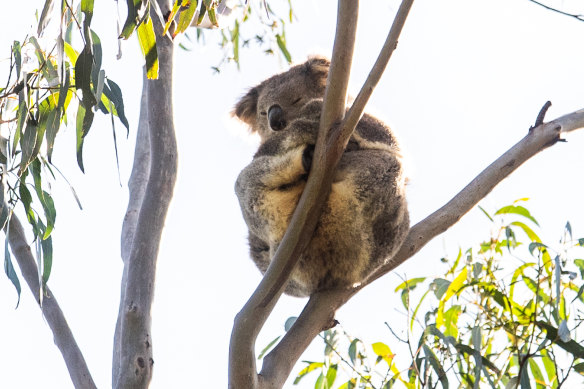
But in its new paper, the Australian Koala Foundation argues the true size of Victoria’s koala population – not including those which have found homes in privately owned blue-gum plantations – is between 18,538 and 28,825.
It says the “implausible” figures arrived at in the paper commissioned by the Environment Department were based on “strong regional biases”, and the quality of the data was impeded by koala numbers being counted in highly populated areas and extrapolated to other parts of the state.
Foundation chair Deborah Tabart believes both the government and the CSIRO have their numbers wrong.
“Show them to me,” she said of the koalas estimated by both bodies. “I’ve driven those landscapes for 35 years. I’ve been to every single forest in those places. They’re just wrong. It’s a desktop [figure].”
The foundation based its own assessment of koala numbers on the capacity of varying landscapes to support koalas, known as “carrying capacity”, as well as counts done by citizen scientists and wildlife carers.
After the Black Summer bushfires of 2019-20, which destroyed 5.52 million hectares of bush and private land (including 1.5 million in Victoria), the Commonwealth listed koalas as endangered in the ACT, NSW and Queensland.

Deborah Tabart, chief executive of the Australian Koala Foundation.
Tabart said inaccurate perceptions that koala populations were secure had persisted in Victoria.
Her organisation has for years been calling for a national Koala Protection Act, and claims the Environment Protection and Biodiversity Conservation Act is incapable of protecting koalas.
“I believe koalas are functionally extinct,” Tabart said. “To me, that means a koala in this landscape today might have a joey, and [that joey] might have a joey, but that’s the end of them; in three generations, they’re gone. And we see nothing in our country to stop that happening.
“I don’t think there’s one koala in our country that’s safe right now, because the laws are inadequate.”

Strzelecki koalas, like this one pictured in the Morwell National Park, are thought to be the last genetically diverse koala population in Victoria.Credit: Justin McManus
Susie Zent acknowledges there is overpopulation in some parts of the state, particularly in western Victoria. But she stresses it’s a different picture in eastern Gippsland, where Strzelecki koalas can be found.
Strzelecki koalas are perhaps the state’s most important group of koalas: they’re the only genetically diverse population left in Victoria and South Australia, and are under great threat from land clearing, climate change and disease.
The state’s remaining koalas are genetically compromised, having descended from a smaller group of koalas moved to French Island for breeding between 1923 and 1994, and returned to the mainland.
Loading
“The Strzelecki bioregion has the least amount of area [of habitat] set aside in permanent reserves and forested areas in Victoria,” Zent said.
Friends of the Earth’s Anthony Amis, who spent three years surveying Strzelecki koalas in the Mullungdung State Forest between Sale and Yarram, said he believed the government’s estimates of koala numbers in Mullungdung were about 10 times too high.
“It doesn’t take anything away from the fact that we’ve got this really important population in Gippsland that’s had most of its habitat privatised [by timber plantations],” he said.
The Department of Energy, Environment and Climate Action did not respond to a request for comment.









 Add Category
Add Category